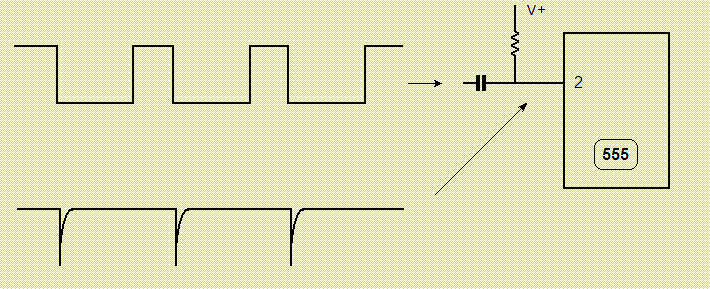Eshal
Advanced Member level 1
- Joined
- Aug 29, 2012
- Messages
- 470
- Helped
- 16
- Reputation
- 32
- Reaction score
- 15
- Trophy points
- 1,298
- Location
- Nowhere :)
- Activity points
- 5,149
Hello everyone!
I am improving my past paper at university so I reviewed my past papers from MSc (While I am doing BS) so I found some questions which I know that you people can surely help me. :-D I am by hope..
Q#1) In monostable, if required frequency is 5KHz and duty cycle is 50% then what is the applied trigger and timing circuit.
I know its conduction time is given as 1.1RC. But what more? How to reach actual answer. :-(
Q#2) In monostable, how long does the triggering voltage have to go in order to initiate the output pulse and why duty cycle must be greater than 70%?
I don't know how long triggering is required. I read from book but not proper answer is defined there. And about duty cycle.... I think this question is wrong because it is not necessary for monostable that it must have duty cycle greater than 70%. I know why duty cycle of astable multiviberator is greater than 50% always but don't know about monostable.
PS: I know the circuit operation please don't ask me to post about circuit operation. If answer is in the circuit operation then take me to the point so that I could grab the answer. Thank you.
Regards,
Cute Princess.
I am improving my past paper at university so I reviewed my past papers from MSc (While I am doing BS) so I found some questions which I know that you people can surely help me. :-D I am by hope..
Q#1) In monostable, if required frequency is 5KHz and duty cycle is 50% then what is the applied trigger and timing circuit.
I know its conduction time is given as 1.1RC. But what more? How to reach actual answer. :-(
Q#2) In monostable, how long does the triggering voltage have to go in order to initiate the output pulse and why duty cycle must be greater than 70%?
I don't know how long triggering is required. I read from book but not proper answer is defined there. And about duty cycle.... I think this question is wrong because it is not necessary for monostable that it must have duty cycle greater than 70%. I know why duty cycle of astable multiviberator is greater than 50% always but don't know about monostable.
PS: I know the circuit operation please don't ask me to post about circuit operation. If answer is in the circuit operation then take me to the point so that I could grab the answer. Thank you.
Regards,
Cute Princess.
